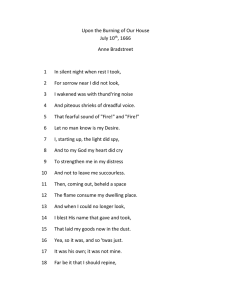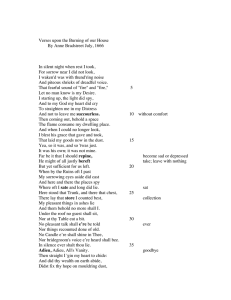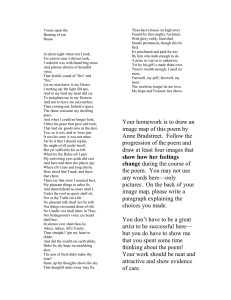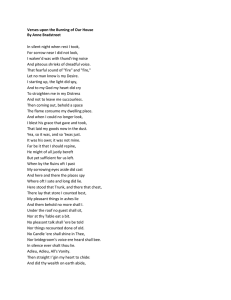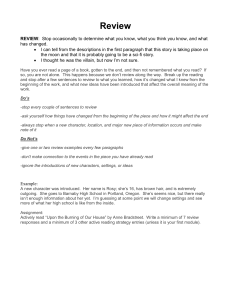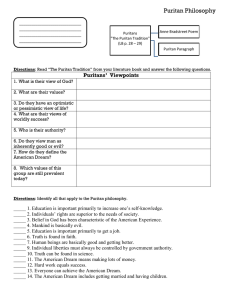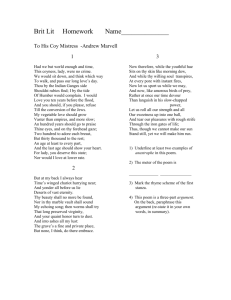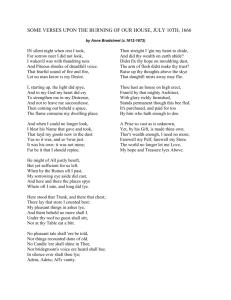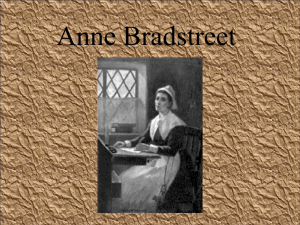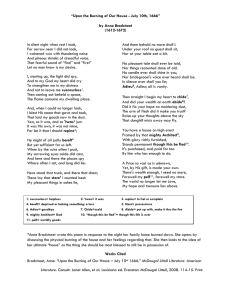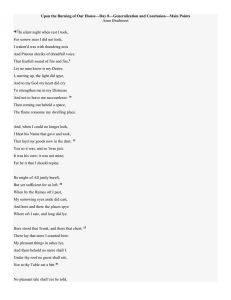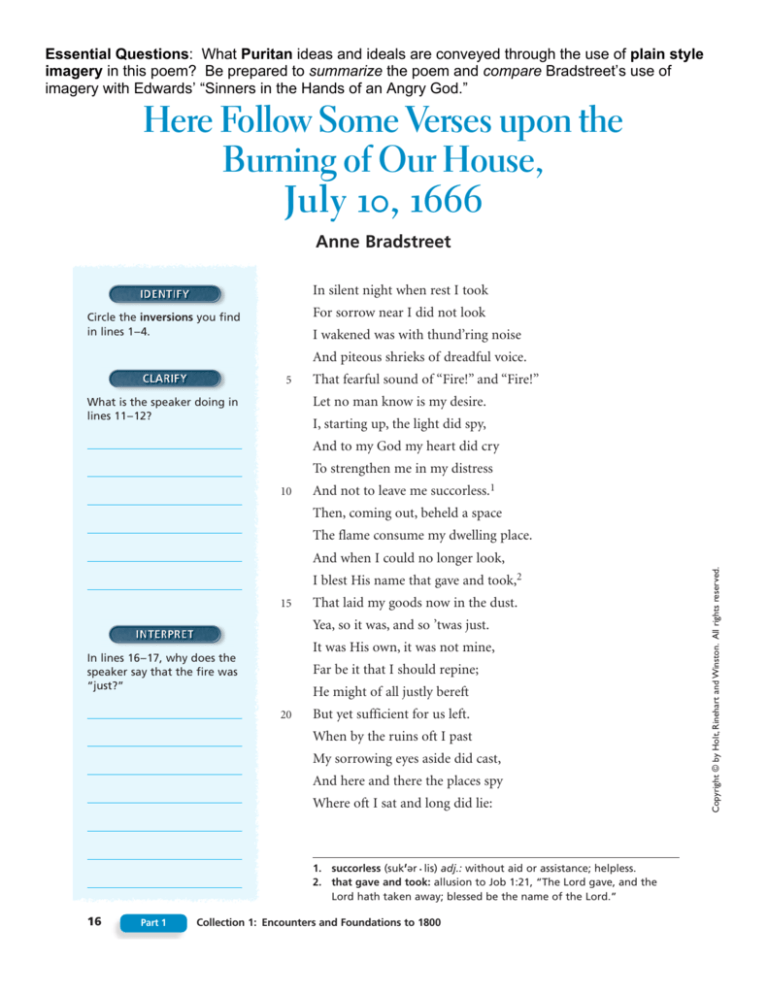
Essential Questions: What Puritan ideas and ideals are conveyed through the use of plain style
imagery in this poem? Be prepared to summarize the poem and compare Bradstreet’s use of
imagery with Edwards’ “Sinners in the Hands of an Angry God.”
Here Follow Some Verses upon the
Burning of Our House,
July 10, 1666
Anne Bradstreet
In silent night when rest I took
For sorrow near I did not look
Circle the inversions you find
in lines 1-4.
I wakened was with thund’ring noise
And piteous shrieks of dreadful voice.
5
That fearful sound of “Fire!” and “Fire!”
Let no man know is my desire.
What is the speaker doing in
lines 11-12?
I, starting up, the light did spy,
And to my God my heart did cry
To strengthen me in my distress
10
And not to leave me succorless.1
Then, coming out, beheld a space
The flame consume my dwelling place.
I blest His name that gave and took,2
15
That laid my goods now in the dust.
Yea, so it was, and so ’twas just.
It was His own, it was not mine,
In lines 16-17, why does the
speaker say that the fire was
“just?”
Far be it that I should repine;
He might of all justly bereft
20
But yet sufficient for us left.
When by the ruins oft I past
My sorrowing eyes aside did cast,
And here and there the places spy
Where oft I sat and long did lie:
1. succorless (suk√¥r · lis) adj.: without aid or assistance; helpless.
2. that gave and took: allusion to Job 1:21, “The Lord gave, and the
Lord hath taken away; blessed be the name of the Lord.”
16
Part 1
Collection 1: Encounters and Foundations to 1800
Copyright © by Holt, Rinehart and Winston. All rights reserved.
And when I could no longer look,
25
Here stood that trunk, and there that chest,
There lay that store I counted best.
My pleasant things in ashes lie,
And them behold no more shall I.
Under thy roof no guest shall sit,
30
What is the “house on high
erect” described in lines
43-46?
Nor at thy table eat a bit.
No pleasant tale shall e’er be told,
Nor things recounted done of old.
No candle e’er shall shine in thee,
Nor bridegroom’s voice e’er heard shall be.
35
In silence ever shall thou lie,
In line 44, who is the
“mighty Architect”?
Adieu, Adieu, all’s vanity.
Then straight I ’gin my heart to chide,
And did thy wealth on earth abide?
Didst fix thy hope on mold’ring dust?
40
The arm of flesh didst make thy trust?
Raise up thy thoughts above the sky
That dunghill mists away may fly.
Thou hast an house on high erect,
Framed by that mighty Architect,
Copyright © by Holt, Rinehart and Winston. All rights reserved.
45
With glory richly furnished,
Practice reading the boxed
passage aloud. As you read
the first time, notice the
rhymes and strong meter.
On your next readings, try to
vary the rate of your reading
to avoid sounding sing-song.
Stands permanent though this be fled.
It’s purchased and paid for too
By Him who hath enough to do.
A price so vast as is unknown
50
Yet by His gift is made thine own;
Bradstreet’s plain style helps
to convey a complex message.
In your own words, what is
this message?
There’s wealth enough, I need no more,
Farewell, my pelf,3 farewell my store.
The world no longer let me love,
My hope and treasure lies above.
The poem is rhymed in couplets. Circle any end rhymes
that do not rhyme exactly.
(Review Skill)
3. pelf: wealth or worldly goods (sometimes used as a term of
contempt).
Here Follow Some Verses upon the Burning of Our House, July 10, 1666
17

